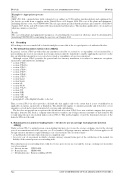Page 550 - SAIT Compendium 2016 Volume2
P. 550
IN 63 (2) Income Tax acT: InTeRPReTaTIon noTes IN 63 (2)
Example 6 – Appropriate spot rate
Facts:
ABC (Pty) Ltd, a manufacturer with a nancial year ending on 30 November, purchased plant and equipment for its factory on credit from a supplier in the United States on 6 August 2014. The cost of the plant and equipment, including delivery costs, was USD500 000. The sale agreement speci ed that the purchase price must be settled by 6 August 2015. At the end of November 2014 no payments had taken place. The machine quali ed for a wear-and-tear allowance under section11(e).
Result:
The cost of the plant and equipment for purposes of calculating the wear-and-tear allowance must be determined by translating USD500 000 to rand using the spot rate on 6 August 2014.
4.3 Rounding
All exchange rates are rounded off to four decimal places since this is the accepted practice of authorised dealers.
5. The default translation rule [section 25D(1)]
In general, section 25D(1) provides that any amount received by or accrued to, or expenditure or loss incurred by, a person during any year of assessment in a foreign currency must be translated to rand by applying the spot rate on the date on which that amount was so received or accrued or expenditure or loss was soincurred.
Although section 25D(1) provides the general rule for currency translation, it is subject to numerous exceptions, special rules and limitations, including –
• section 25D(2);
• section 25D(2A);
• section 25D(3);
• section 25D(4);
• section 25D(5);
• section 25D(6);
• section 25D(7);
• section 6quat;
• section 6quin;
• section 9A;
• section 9D(6);
• section 35A(5);
• section 47J;
• section 50H;
• section 51H;
• section 64N; and
• paragraph 43 of the Eighth Schedule to the Act.
Thus, section 25D(1) in effect provides a default rule that applies only to the extent that it is not overridden by an applicable exception, special rule or limitation. The default rule applies to amounts generally and it therefore covers amounts received and accrued or incurred of a revenue and capital nature.
The Act does not provide an exception to the default rule in section 25D(1) for a non- resident company that operates through a domestic PE. Such a company must therefore translate any foreign currency amounts of that domestic PE to rand using the spot rate method under section 25D(1). This method applies even if the functional currency of the domestic PE is not the rand.
6. Natural persons and non-trading trusts – election to use an average exchange rate [section 25D(3)]
Under section 25D(3) a natural person or non-trading trust may elect to use the average exchange rate for the relevant year of assessment instead of the spot rate (see 5) to translate all foreign currency amounts. The election applies to all foreign currency amounts recognised during a year of assessment. The election is made –
• as and when the relevant return of income is completed; and
• for every year of assessment in which a foreign currency amount forms part of the calculation of the normal tax liability of the natural person or non-trading trust.
The natural person or non-trading trust could elect to use spot rates in one year and the average exchange rate in another
year of assessment. (a) Interest income (b) Rental income (c) Dividend income
USD50 000.
GBP60 000.
Kenyan schilling 20 000.
542
saIT comPendIum oF Tax LegIsLaTIon VoLume 2


